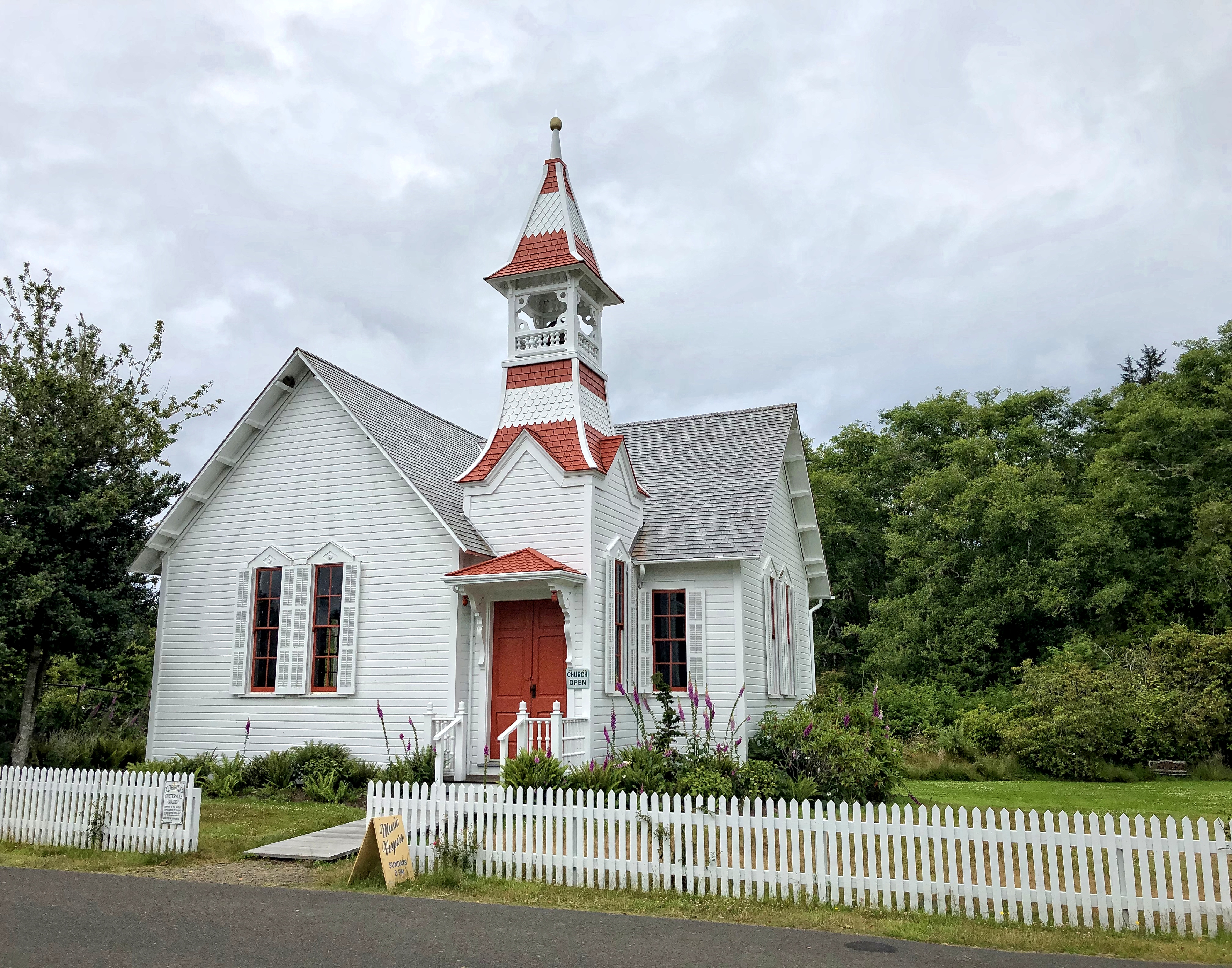
The Oysterville Church is located at the center of town.
It’s true Oysterville is off the beaten path, 15 miles up the Long Beach Peninsula. But the town’s quaint yet funky vibe makes it worth going out of your way.
Although its name comes from the fact it used to have about a dozen oyster operations, only one remains today: Oysterville Sea Farms. It’s worth a stop to sample the shellfish farmed by Dan Driscoll and his dad, Les.
But the historic town, established in 1854, also has much more to offer. It’s worth visiting just to walk around the quiet residential area, learn about its history, and admire the homes and landscape. The atmosphere is very much like the quintessential New England coastal town, with large wood-shingle houses featuring colorful gardens surrounded by picket fences.
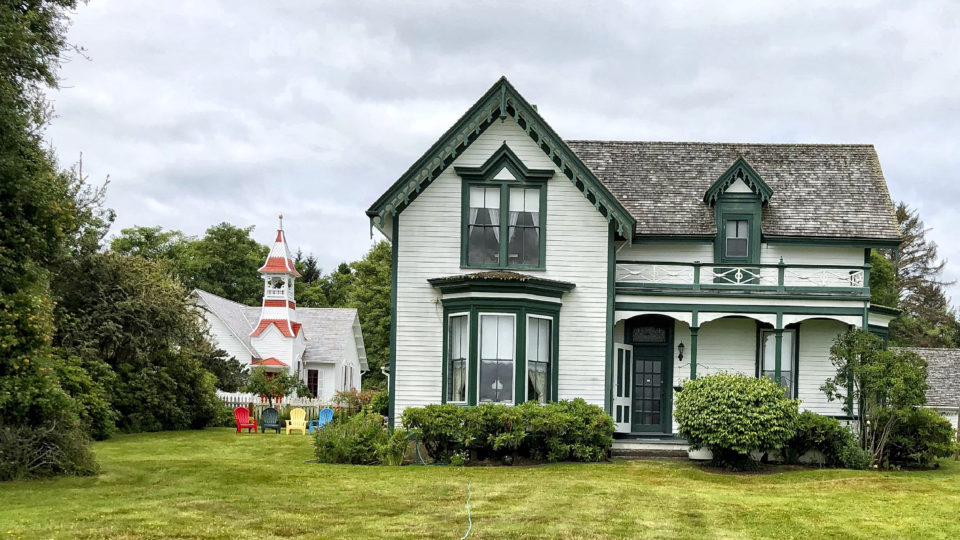
This house was built after oysterman Tom Crellin received a federal land grant for the property. The deed, signed by President Abraham Lincoln, still hangs on a wall inside. The house is now owned by Sydney Stevens, a descendant of Oysterville co-founder R.H. Espy.
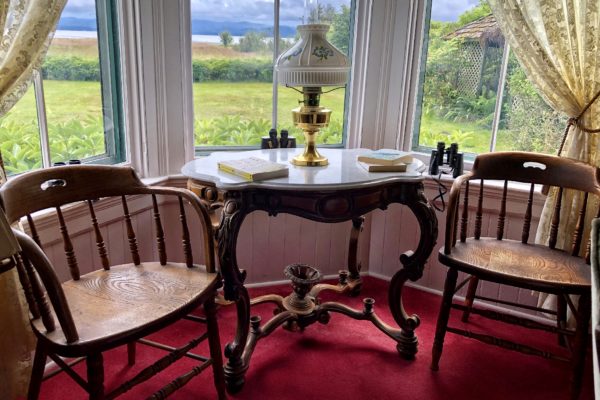
A picturesque spot in Sydney Stevens’ house to sit and view Willapa Bay.
A good place to visit first is the Oysterville Church, which was built in 1892 and is usually open to the public during the day. An information sheet posted there notes that it’s available to rent for events through Sydney Stevens, 83, an author and a history buff on all things Oysterville.
Stevens, a descendant of the Espy family that helped found the town, lives in one of the most beautiful and oldest houses there. Built in 1869 by oysterman Tom Crellin, it’s right across the street from the church. The floors are covered in plush, brightly colored carpet, while the walls are full of old photos and historic mementos.
The 150-year-old home is expensive to maintain: Stevens said it costs around $30,000 a year fixing it up.
“I once likened the house to having a kid perpetually in college,” she laughed. “You just keep pouring money out.”
From the church, it’s fairly easy to walk through the town and check out the different houses, as well as the schoolhouse built in 1907, a block north of the church.
Over time, many of the older structures have been torn down and replaced with more modern homes, and people with a lot more money have moved in on a part-time basis. Martie Kilmer — who has family ties to Oysterville and spends half of her time in Portland, where she works as an interior designer — represents a link between the new and old Oysterville.
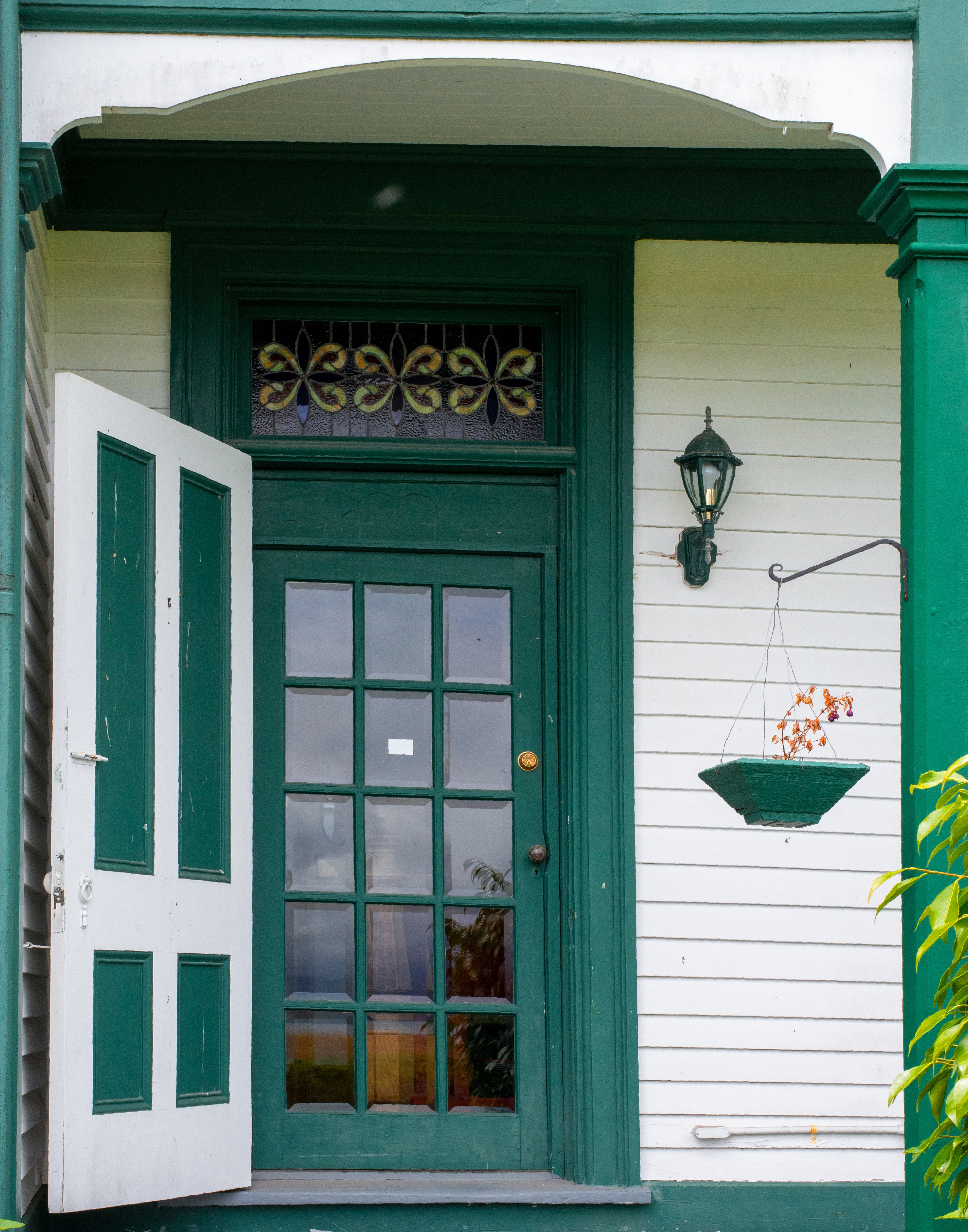
The door to one of the oldest houses in
Oysterville, built in 1852 by an oysterman.
The Crellin family, originally from the Isle of Man off the coast of England, made the trek to Oysterville in 1852. Brothers Tom and John Crellin were looking to settle there and make their living as oyster farmers.
Because Washington was still a territory when they applied for land grants to build their houses, the deeds had to be signed by the president of the United States.
The deed for Tom’s property still hangs in a corner of the Crellin House along with numerous other historic documents and old photos. Abraham Lincoln signed that deed on April 1, 1865 — just two weeks before his assassination.
Even though John sent his land grant application to Washington, D.C., before Tom sent his, Lincoln never got to sign it. Instead, John’s deed was signed by Andrew Johnson the following year.
The brothers built almost identical homes, with architectural plans they had brought from England. The only differences were that Tom’s house had slightly larger rooms and a couple of bay windows.
Both brothers left for California in the 1870s, according to Oysterville historian Sydney Stevens’ website. Her great-grandfather, R.H. Espy, who co-founded the town, bought Tom’s house in 1892, and it has been in that family ever since. Stevens now lives there with her husband, Nyel. They are celebrating the house’s 150th birthday this year.
The house she bought for her family was originally built in 1869, but an inspection found it had to be rebuilt because the wood was deteriorating.
After the rebuild, it still fits in with the rest of the houses in town, but it also has modern touches like a croquet lawn, concrete floors and a pottery studio next to a lush garden with stone pathways.
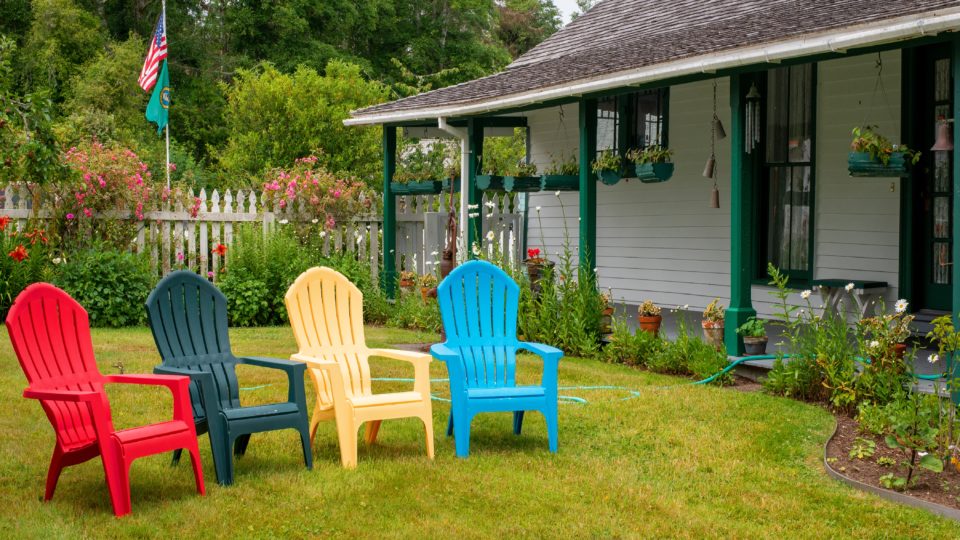
A colorful set of chairs facing the Willapa Bay in Sydney Stevens’ yard.
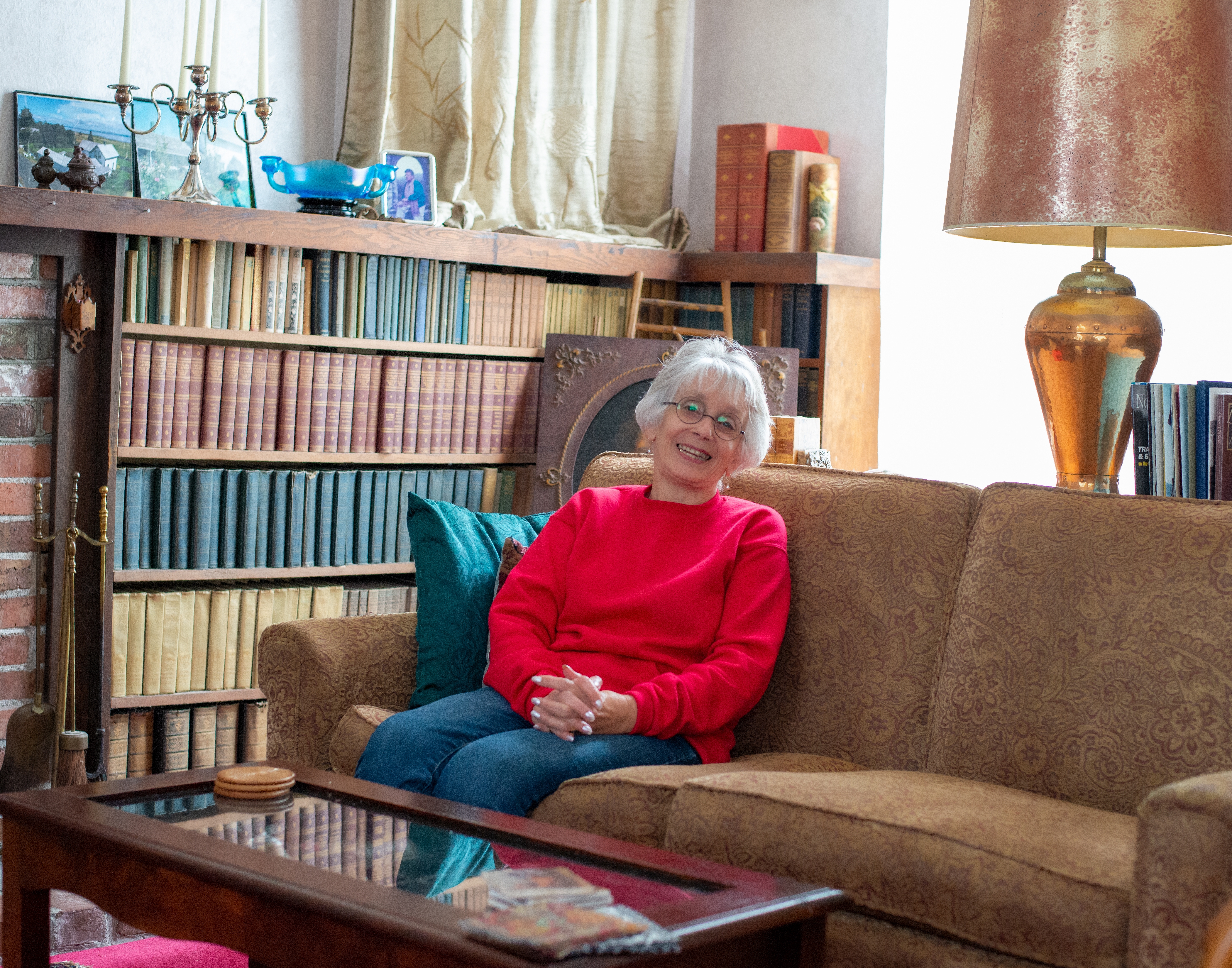
Oysterville writer and historian Sydney Stevens sits in her living room.
While the makeup of the community may have changed, the town has maintained the look and high-end architecture that makes it unique. (Stevens describes the structures’ overall style as Craftsman, or Carpenter Gothic.)
That’s no accident.
When Oysterville was approved to be on the National Register of Historic Districts in 1976, the community formed a design review board, which was intended to make sure new houses and any additions to old houses stayed in line with the town’s quaint village atmosphere.
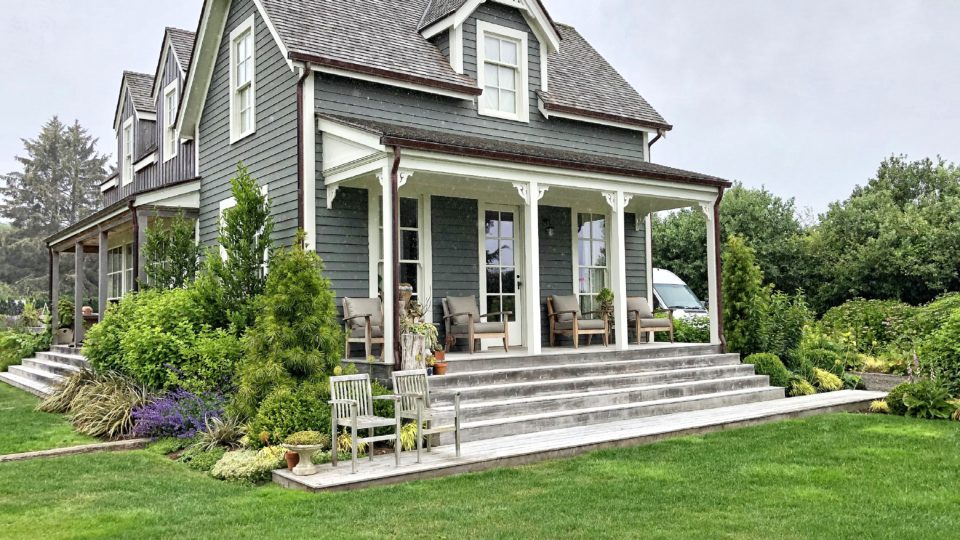
The Captain Stream House was rebuilt a few years ago because of its failing condition. It’s now occupied by Martie Kilmer.
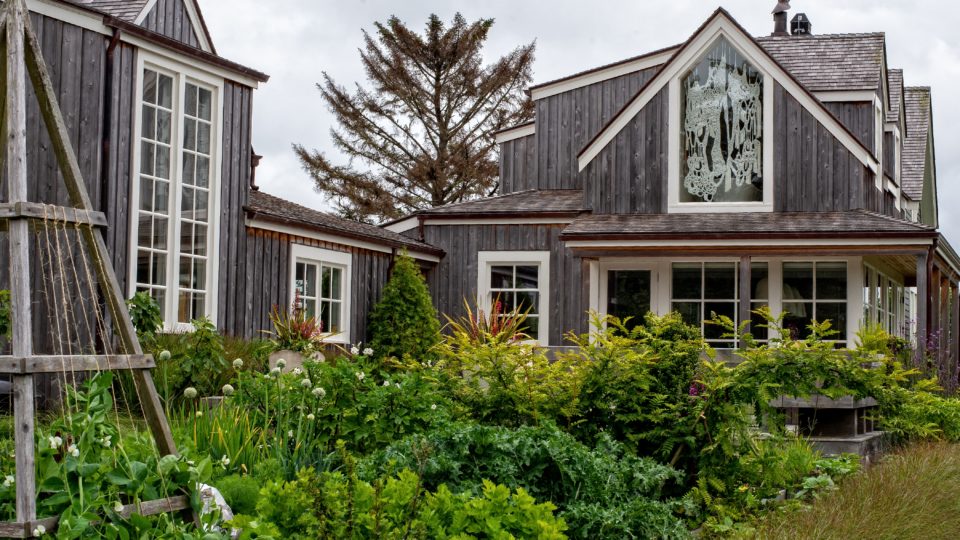
The garden in the back of Martie Kilmer’s house. Kilmer and her family spend around half of the time in Portland where her work is based and the other half in Oysterville.
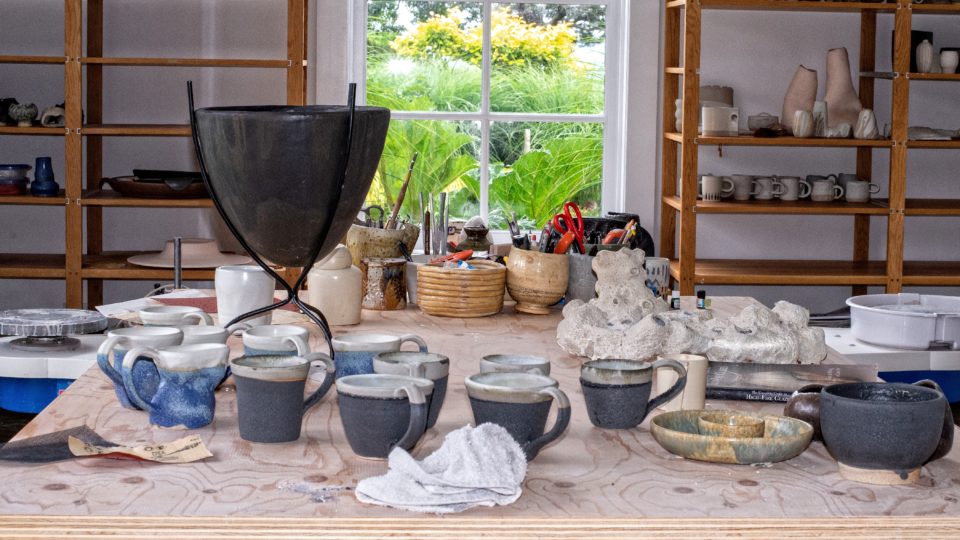
This pottery studio in the backyard is one of the home’s modern additions.
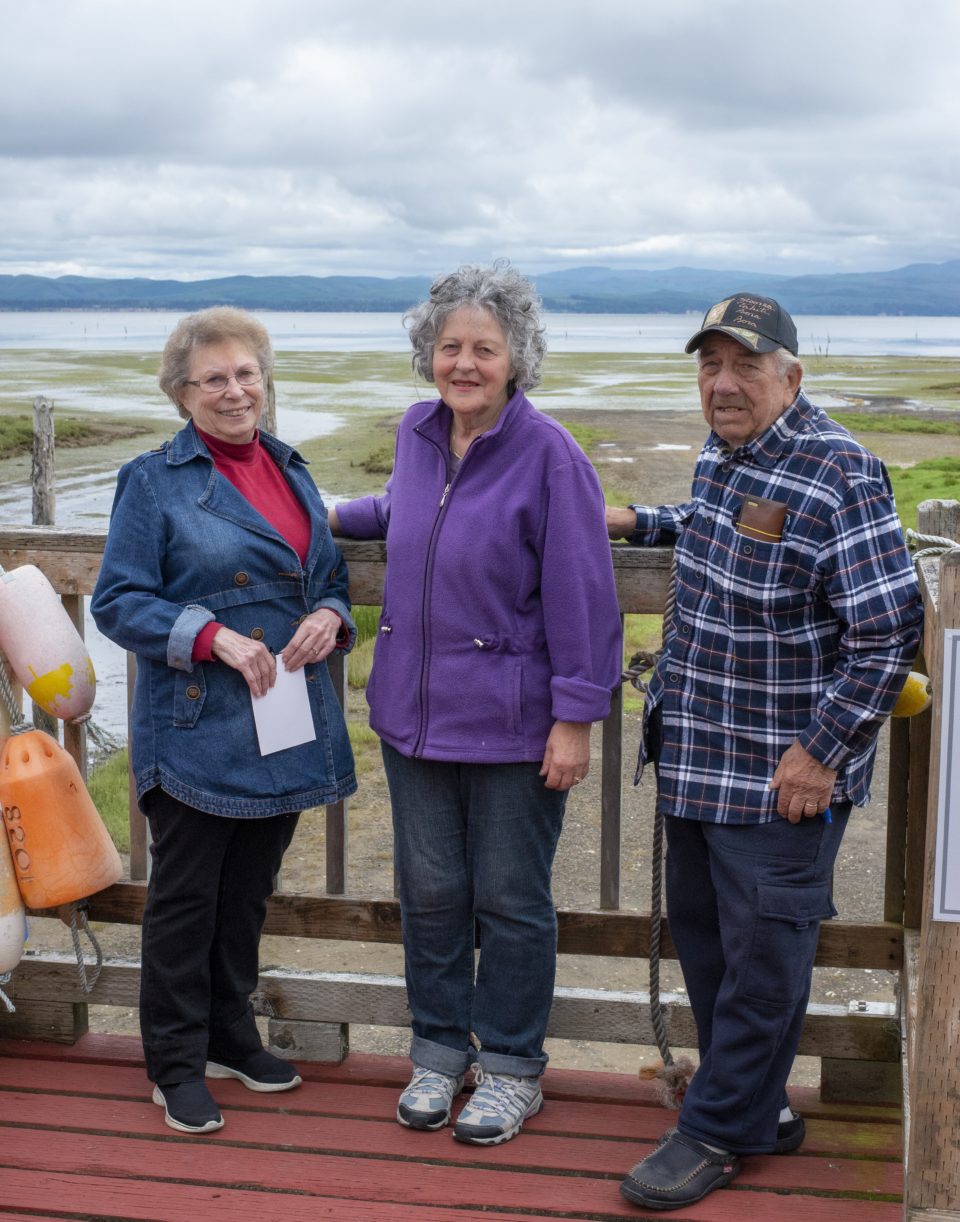
Longtime Oysterville residents Charlotte Jacobs, left, Ann Driscoll and Bud Goulter enjoy the deck on the bay at Oysterville Sea Farms, the last remaining oyster business in town.
Stevens said her mother, who assisted in the board’s formation, wanted to ensure Oysterville didn’t become commercialized or a trailer park.
“I remember my mother saying the one thing we do not want to have in Oysterville is trailers, and neon signs,” said Stevens. “She wanted to keep the quiet sense of timelessness that Oysterville had.”
Still, the review board drew some gripes from community members, and there were some disputes when applicants were denied simple changes to their homes, according to Stevens.
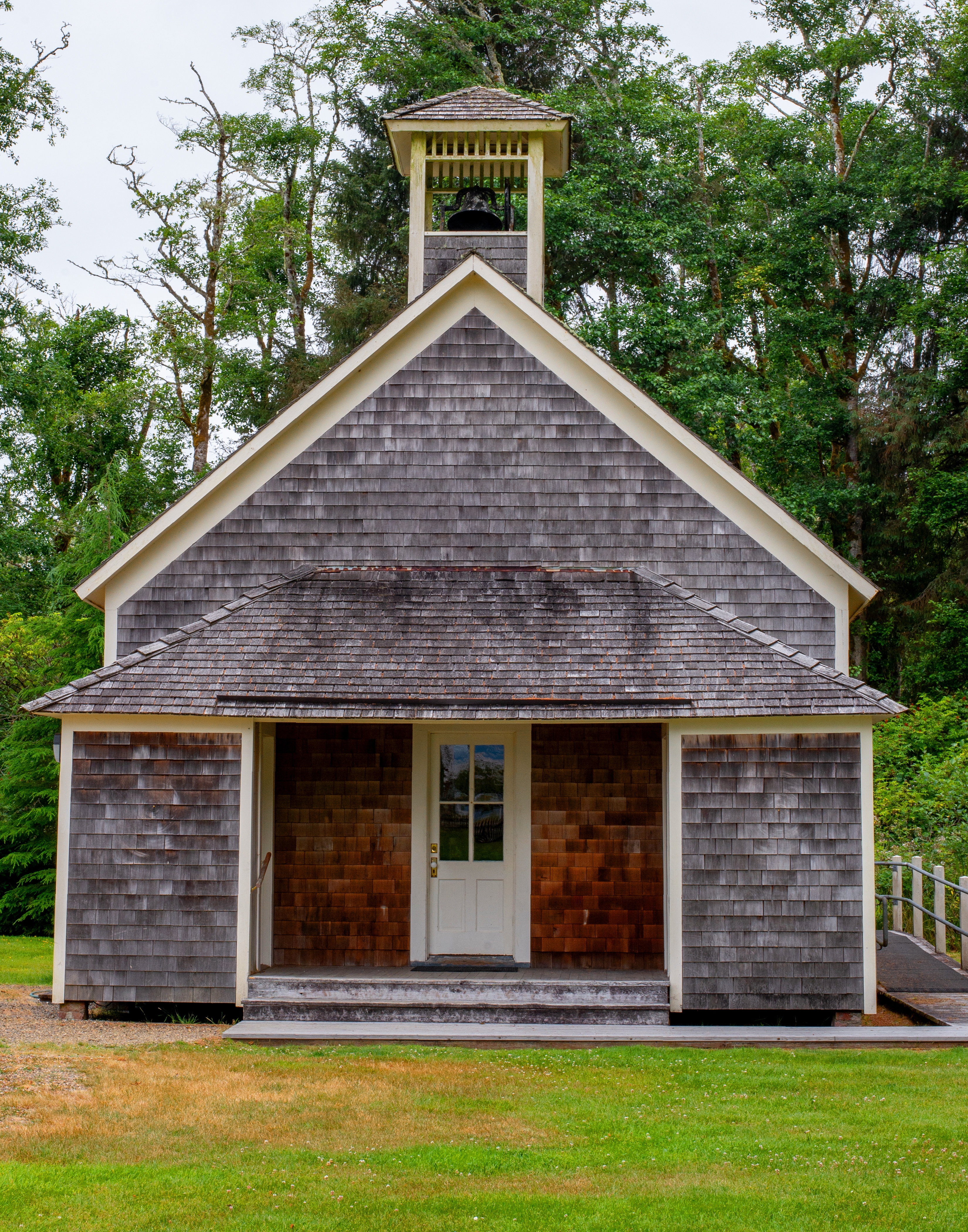
The historic Oysterville Schoolhouse has been closed since 1957, but still occasionally hosts events like lectures about local history.
“The people who move in, they loved the idea it’s a quaint little village,” she said. “But they didn’t like being told, ‘Oh no, you can’t paint that color’ or ‘No, you can’t add that.’”
The review board was dissolved in 2016. Today, there’s a county hearings examiner who reviews all proposed new construction to make sure it complies with National Historic District requirements.
It takes a bit of dedication to get to Oysterville. From Grays Harbor, it takes about two hours to drive about 72 miles south on U.S. 101 from Aberdeen to Long Beach and then 15
miles up the peninsula on State Route 103 to Oysterville. For an informative self-guided walking tour, including a map and description of each historic house, visit the Oysterville Restoration Foundation’s website: www.oysterville.org/walking-tour.
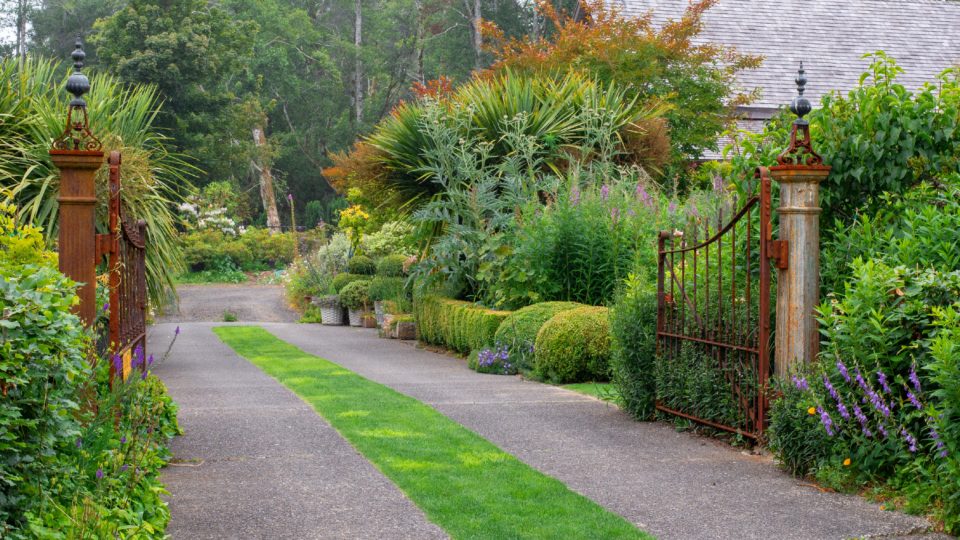
A gate to another house in Oysterville, which incorporates some of the Victorian design that’s common in this historic town.